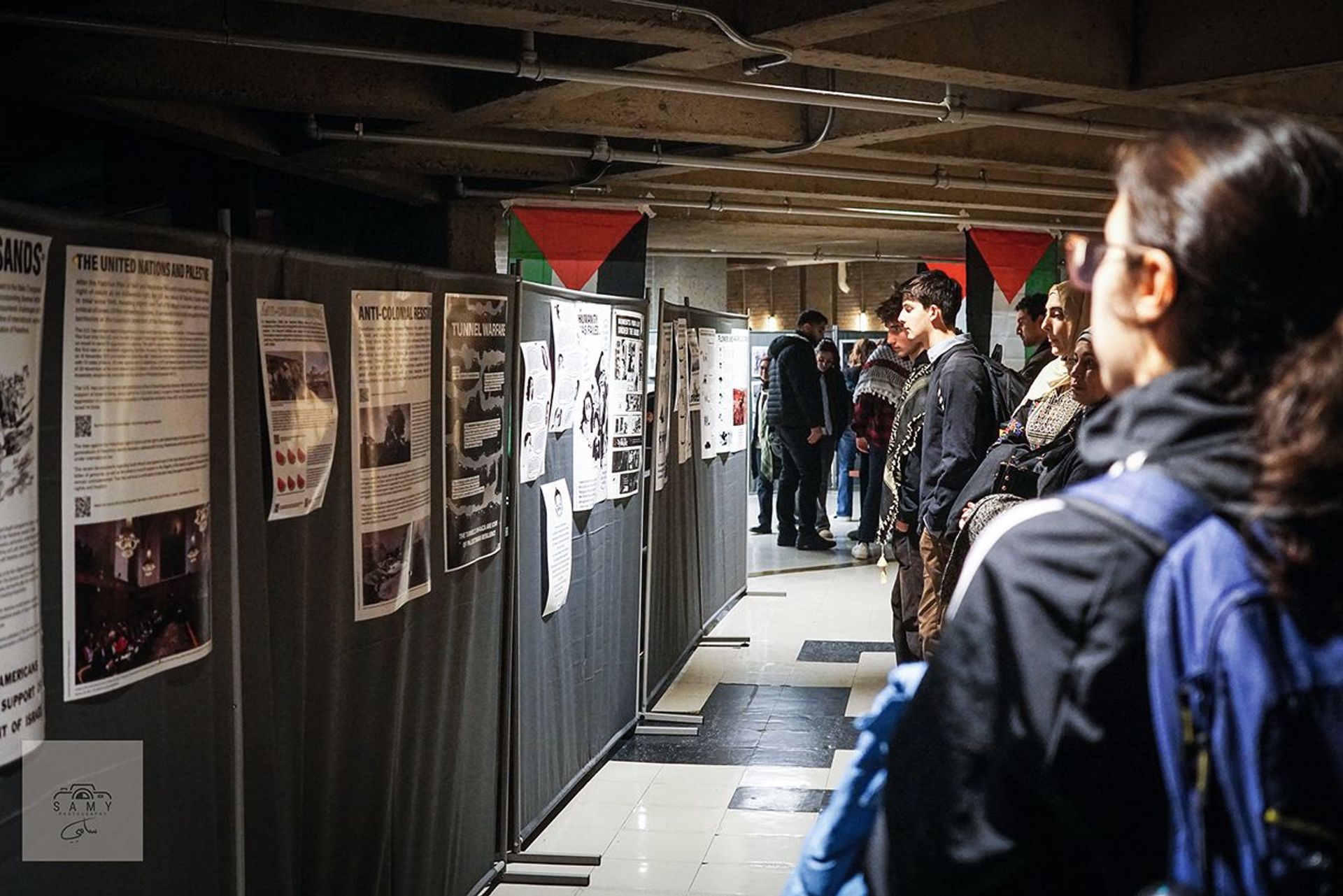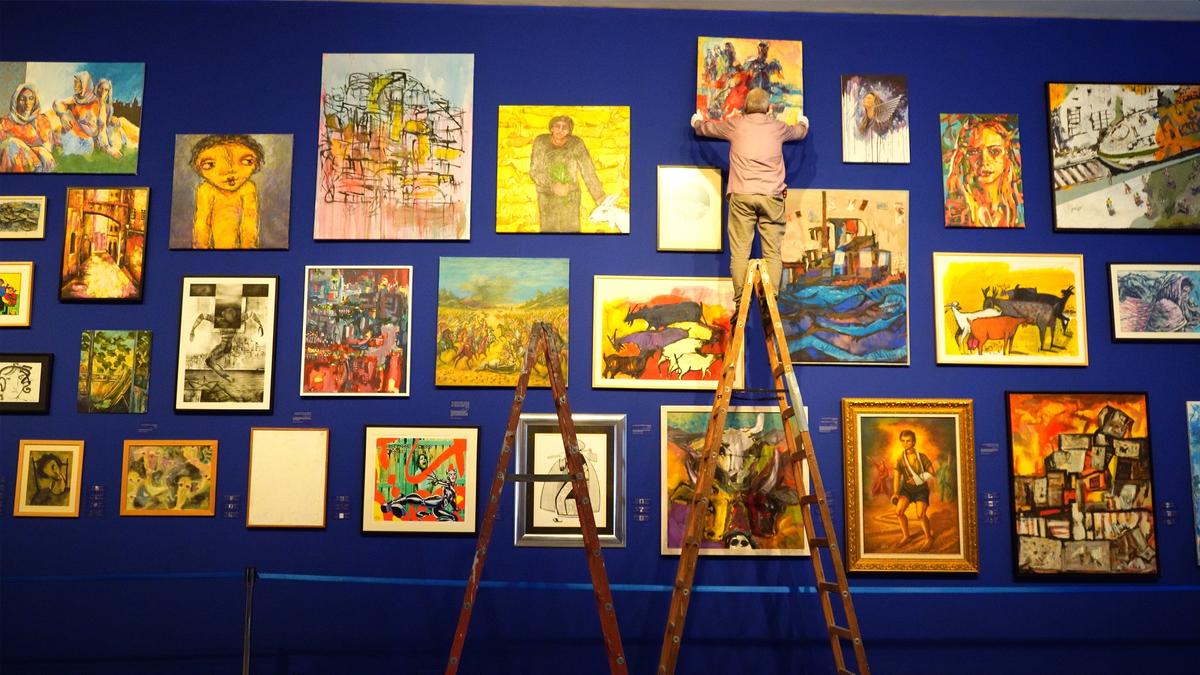The Palestinian Museum in Birzeit, in the occupied West Bank, is redefining its role in light of the war in Gaza and escalating violence across the occupied territories. It is focusing on research, digital access and international partnerships while treading a fine line between remaining open to visitors and protecting its collection.
“I don’t think this is something we studied at university—how to plan for a war and genocide,” Amer Shomali, the director general of the museum, tells The Art Newspaper. “All the technical aspects of our work in the museum are changing, radically and rapidly.”
Shomali started his job on 8 October 2023, a day after Hamas’s deadly attack on Israel and the launch of Israel’s military offensive in Gaza. The war has impacted all the occupied territories, with Israeli forces closing roads, increasing the number of checkpoints and restricting Palestinians’ movements. The museum was forced to close for four months from October 2023 to February 2024.
Shomali and his team watched as Israeli airstrikes destroyed much of Gaza’s cultural infrastructure—museums, art centres, archives and historic sites were reduced to rubble. In June, an independent UN investigative body concluded that some of these attacks on cultural, religious and educational sites across occupied Palestinian territory amount to war crimes and the crime against humanity of extermination. Israel has rejected both this report and findings by the UN special rapporteur and a number of human rights groups that Israel’s actions in Gaza are consistent with genocide.
Amid growing instability and ongoing disruption, the museum grew concerned for its collection, which includes 19th- and 20th-century paintings and embroidery, as well as political posters. Founded by the Taawon association, it was created to preserve, promote and revive Palestinian culture and narratives. It opened to the public in 2016 after years of planning and fundraising, and now receives around 15,000 visitors a year.
Should we evacuate the museum and keep it empty during the war? Would that mean we are surrendering?Amer Shomali, director general, Palestinian Museum
“Of course, we are terrified of something happening to the collection; this is why we are moving it around to safer places,” Shomali says. “But at the same time, we have this big question of should we evacuate the museum and keep it empty during the war? Would that mean we are surrendering? Does it mean the collection itself is more important than the Palestinians?”
The museum has taken precautions to protect its holdings by keeping paintings exhibited in Europe safely there, and developing international projects. One such partnership led to an exhibition at the V&A Dundee in Scotland. Thread Memory: Embroidery from Palestine, which opened on 26 June, explores the art and legacy of tatreez—the ancient practice of Palestinian hand embroidery. Remarkable for its regional variation, and primarily undertaken by women, tatreez reflects the social and cultural identity of Palestinian people. Many of the items on display come from the Palestinian Museum’s collection and were at an exhibition of the same name at Hayy Jameel in Jeddah, Saudi Arabia, in collaboration with Art Jameel, until April.
A shift in museum practice
In February 2024, the Palestinian Museum mounted a bold show spotlighting Gazan artists, This is Not an Exhibition, a decision that reflected the team’s belief to “stand together in the face of genocide”, Shomali says.
Working with artists in Gaza, the museum secured loans from private collectors and institutions across Palestine. As word spread, visitors brought Gazan pieces of their own to include. “We started moving paintings around, freeing some space to add new artwork,” Shomali says. The exhibition, still on display, now features 335 works by 122 artists, at least five of whom have been killed.

The Gaza Remains the Story exhibition has been presented in 120 locations worldwide Courtesy of Palestinian Museum/Samy Photography
The show marked a major shift in museum practice, inviting the public to co-author the exhibition and shape its narrative. But reaching its audience—80% of whom are in the diaspora and unable to access the museum, Shomali says—has required creative solutions. “We started turning our weakness into our strength, becoming custodians of the national collection around the world,” he says, adding that they began to “think outside the box and outside of the walls of the museum”.
This led to Gaza Remains the Story, a free downloadable digital exhibition. It includes 35 works by Gazan artists, 60 archival photographs, 44 informative boards and links to videos and podcasts, complete with captions, QR codes and installation guides. It has been presented in 120 locations worldwide, with demand continuing. The success has prompted the museum to digitise as many programmes as possible. Two additional exhibitions are planned for digital release, including With My Own Eyes, a current show by French photographer Joss Dray.
While expanding digitally, the museum is also aiding the rescue of Palestinian heritage in Gaza, with colleagues evacuating around 25% of the collections from the rubble; Shomali says the rest are destroyed or looted. One salvaged embroidered dress from Rafah Museum features in the Dundee show.
But the war in Gaza has also plunged the museum into financial crisis. Shomali says many former European and American funders have cut ties, while Palestinian and Arab donors are now focused on urgent relief in Gaza. “We are not going to compete with Gaza—supporting Gaza on the ground is a priority,” Shomali says. “But the museum is in a very fragile financial situation.” He says anyone can donate through the museum’s website to help sustain its work.
In a volatile environment, Shomali says the museum nonetheless remains committed to its long-term goal—a permanent exhibition that reflects the history of Palestine and its people. Meanwhile, it is in talks with other cultural institutions about the embroidery exhibition’s next stop. “We’ll try to keep it travelling until it’s safer to get it back home,” Shomali says.


